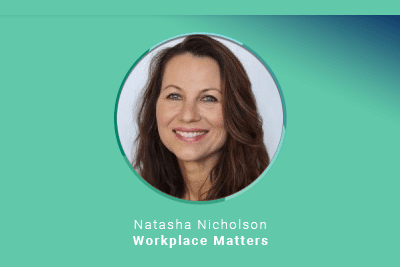
When you think of diversity, equity and inclusion, does socioeconomic class come to mind? Probably not. And you are not alone. As an awakening on the importance of DEI has blossomed, the idea that economically disadvantaged people should be the beneficiaries of DEI has slipped by most of us. It’s time to change that mindset.
Let’s start by defining what we mean by socioeconomic status and class. The American Psychological Association defines “socioeconomic status as the social standing or class of an individual or group. It is often measured as a combination of education, income and occupation.”
Why is it so important to factor socioeconomic class into DEI?
There’s some compelling research that tells us that socioeconomic status and class have a direct connection to an employee’s experience in the workplace.
For instance, one piece of research indicates that workers with a low socioeconomic position “have a higher risk for health problems and premature dropout from the workforce.” And that “unfavorable working conditions and unhealthy behaviors are more prevalent among this group of workers.”
And a recent study by Paul Ingram, Kravis Professor of Business at Columbia Business School, shows a dramatic disparity in career trajectory that can be drawn directly back to a person’s socioeconomic background. The study indicates that, “Workers who come from lower social-class origins in the United States are 32 percent less likely to become managers than those who come from higher social-class origins.”
There are some significant ramifications around this lack of advancement. “Researchers have found that promotion to a managerial role creates substantial job satisfaction—as much as a 60 percent raise in pay would.” And “managerial roles are also associated with better health: Managers experience less stress and live longer than nonmanagers do.” Interestingly, “One study found that simply labeling a participant as a “leader” rather than a “support person” before a task produced a better physiological response and better performance under pressure. Overall, the well-being benefits of hierarchical advantage are even greater than those of the accompanying boost in income.”
How a focus on socioeconomic class can help to combat other forms of disadvantage
Ingram and other experts argue focusing on socioeconomic class can reinforce efforts to combat other forms of disadvantage. How? Because economic disadvantage is one of the common realities faced by people who have been traditionally marginalized.
Consider these statistics on people who are most likely to be socioeconomically disadvantaged.
- Disabled people are twice as likely to live in poverty — 21.6 percent of disabled people were considered poor under the Census’s Supplemental Poverty Measure, compared with just more than 10 percent of people without disabilities.
- More than one in five Black Americans (21.3 percent) are in the third generation of their family to be poorcompared to just 1.3 percent of whites experiencing third-generation poverty.
- Women in America are still 35 percent more likely than men to be poor in America, with single mothers facing the highest risk. Currently, 35 percent of single women with children live and raise their families in poverty.
In addressing socioeconomic class as part of the DEI effort, companies can cast a wider net that will encompass people who need the most support. In doing so, they can be sure to pinpoint the “most disadvantaged of the disadvantaged”— such as people who have come from a lower socioeconomic class in addition to being part of an underrepresented group.
As companies are increasingly becoming the community stewards of DEI, they are in a unique position to help break the cycle of socioeconomic disadvantage. And there are some specific reasons why they need to do just that.
The impact of socioeconomic status on workplace interactions
According to experts, the perpetuation of hierarchies has major significance in the workplace. Historian and economic writer, Walter Johnson, asserts that socioeconomic status can carry through to the workplace and impact how workers interact. “It affects how sub-groups are formed in the company and can affect the productivity of the organization. A firm might appear more as a loose organization of sub-groups than a unified economic company. The looser the organization and the more powerful the sub-group, the more difficult the company is to lead and motivate.”
6 ways to integrate socioeconomic class into your DEI efforts
There are some concrete steps that companies can take to address socioeconomic class in the workplace, improving the employee work experience, creating equity in advancement and cultivating a more collaborative and productive work environment.
- Adjust systems and processes to exclude bias in hiring and advancement – Tackling socioeconomic class differences will mean looking at adjusting systems and processes, particularly in hiring and advancement. The best way to do this is through consistently applied criteria and an equitable decision-making process that eliminates arbitrary choices. Consider the manager who feels “most comfortable” hiring or advancing someone who is most like him or her. Maybe they gravitate toward people who share the same expensive hobbies (such as golf or boating) or have had the privilege of travelling extensively—all of which take the kind of resources that someone from a lower socioeconomic class could not afford. The creation of standardized criteria and job-related skills assessments can wipe out the possibilities of making hiring and advancement selections based on these kinds of personal biases.
- Address stereotypical thinking and hidden biases about socioeconomic class – According to a study by the American Psychological Association, people in a higher social class have an exaggerated belief that they are more capable than others. And perhaps most salient is that this overconfidence can be misinterpreted by others (such as hiring decision-makers) as greater competence, thereby perpetuating social hierarchies. And the situation only grows worse for the socioeconomic disadvantaged with what Ingram calls “stereotype threat”— the phenomenon whereby people perform worse because of negative stereotypes attached to their identity. Dispelling such stereotypes and uncovering hidden biases is where education and training come in.
- Ensure your DEI training explores nuanced situations and features a variety of identities – Education and training remain a top strategy for helping employees change perspectives and achieve self-discovery. Impress upon your employees that we all have blind spots; the purpose of learning is to lift the veil of our own personal biases, some of which may have a direct impact on our ability to connect and collaborate with others. Training that puts the focus on real stories and authentic experiences will be the most effective way to make inroads into real progress.
- Cultivate inclusiveness through socioeconomic connectedness – Findings from a major recent study tell us that economic connectedness is a better predictor of a community’s upward mobility than any other characteristic studied yet. And while connectedness is most effective when it starts in childhood, creating those connections in the workplace is yet another way companies can tackle the issue of socioeconomic disadvantage. When socioeconomically disadvantaged people connect with others who are of a higher socioeconomic class, the wall between the two groups begins to come down. Any opportunity to create these connections, particularly when they are most natural and informal, is a chance to create greater parity.
- Make accommodations possible for new candidates and existing employees – Accommodations are one way to effectively recruit and retain employees. And when it comes to addressing issues related to socioeconomic class, it can make all the difference. The type of accommodation will vary depending on the individual and their circumstances. For example, it might include providing a flexible schedule to account for juggling childcare needs, offering an option of a hybrid or remote arrangement for someone who may have complexities with transportation (i.e., wheelchair user or someone with chronic health issues), or providing access to certain tools that will aid in job success.
- Create programs designed to enable opportunities for socioeconomic growth – In addition to providing training and fostering connectedness, specific programs can also affect change. Career mentorship has long been a way to bring underrepresented people into the fold. By factoring in socioeconomic class, you can be sure to identify everyone who will benefit most from this kind of one-to-one support. College tuition reimbursement programs can offer another way for companies to support educational advancement. Finally, employee resource groups, such as those aimed at supporting the needs of first-generation professionals, may be another way to ensure that this important group has a voice.
The steps above are just a few ways that companies can help address socioeconomic class differences as part of their overall DEI efforts. But to be clear, this is a deeply rooted problem and there is no easy fix. As you think about how to tackle this issue in your organization, take the time you need to read the studies referenced in this piece and reflect on what you can do to address this highly prevalent, but largely overlooked disadvantage in today’s workforce. The result will be well worth the effort—leading to a more collaborative, engaged and productive workforce where everyone has an opportunity to be successful.












